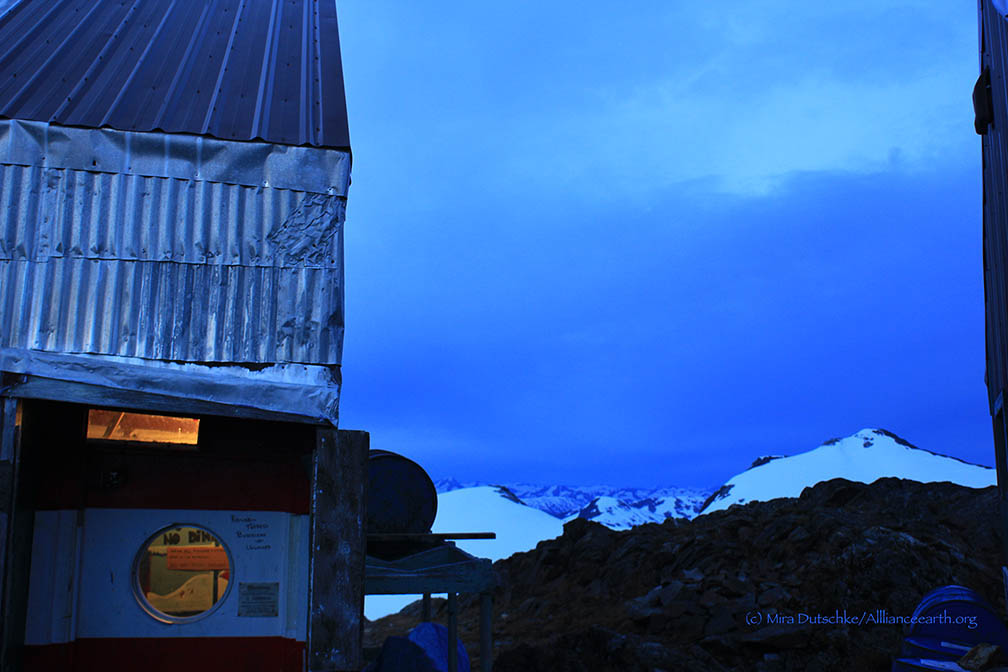By Jamie Bradshaw
While writing this, I am sitting in The Cook Shack at Camp 17 listening to Pink Floyd while the cooks are planning lunch and our fearless leaders are setting the route for the Norris Cache, our first move to Camp 10. Once the route is set and the weather softens, the first trail party will hit the trail. Fortunately, I am in the first trail party and this time I will have first dibs on sleeping arrangements! I am really looking forward to seeing new sights and I am pumped to endure what I have been told is the most physically and mentally challenging part of the icefield traverse. Another reason why I am so excited to arrive at Camp 10 is because I know just how good the view is. Unlike the other students, Camp 10 is not a complete mystery to me. If you followed the 2012 JIRP blog, you may remember my post from last summer about my fortunate flight to Camp 10.
Jamie and “Blue”, the trusty JIRP Suburban, on their way to Atlin, BC, Canada to continue JIRP logistics in 2012. Photo: Jamie Bradshaw
I first heard about the program nearly three years ago when enrolled in a Glacier Surveying Field Methods course offered by Mike Hekkers at the University of Alaska Southeast in Juneau, Alaska. I was immediately intrigued. In 2011, I was lucky to be able to spend time with the JIRPers while they were in Juneau for a week. I hiked to Herbert Glacier with them and showed them our surveying sites on Mendenhall Glacier. Last year, I saw the Logistics Agent position for JIRP was available. I decided to apply for the position because it would be a great way to support JIRP, get involved and I figured it would give me a unique perspective of JIRP in hopes of participating as a student in the summer of 2013. You could say that I had the “JIRP bug”.
Nearly all of the JIRP mystery is removed for me because of my logistics position last summer. I understood how the food, supplies and mail get here, I knew what many of the camps look like and approximately how long we spend at each camp, I knew how meals work and how day and multi-day trips work and I knew of the joys of Atlin, BC. I also knew three of the students participating prior to JIRP, I knew the staff members and many of the guest lecturers from previous JIRP experiences. Most of the time I really appreciate my JIRP background because I can answer many questions that students have and I can prepare myself for upcoming events. Other times, this background takes some of the excitement of the unknown away from me that the other students have. Needless to say, I am very thankful to have this JIRP knowledge and to have the unknowns of the routes from camp to camp!
While coordinating logistics in Juneau last summer, I read the blogs, flew to Camps 10 and 18, and saw how close the students and staff grew. I was honored to be a part of the JIRP family, but I wanted to learn and grow with everyone on the ice. I knew that JIRP would be an amazing experience and I anxiously awaited the summer 2013 season to begin. On the hike up to Camp 17A, I kept saying to myself “ I can’t believe this is finally happening!” So far, JIRP has been everything I have imagined it to be!
Jamie on the upper Lemon Creek Glacier overlooking the Dead Branch of Norris Glacier; where, after three years, JIRP is really happening! Photo: Jamie Bradshaw
































